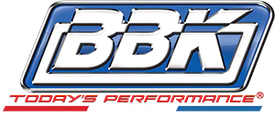Tech Guide - Underdrive Pulleys
Back in the late 1980’s when our team was figuring out the best ways to get more horsepower out of Detroit’s latest breed of electronic fuel injected models, our engineers started playing with the speed of the serpentine belt system. Unlike earlier carbureted vehicles that used separate belts for many of the accessories, these latest vehicles all came standard with a single serpentine belt that ran all accessories.
|
During the 2000 model year, Ford made a switch to a shorter water pump shaft, which required a new pulley. However, the old style pumps and pulleys were still used at some factory locations through 2001. So you may have the wrong water pump in your possession. To be sure, compare against your stock pulley. They should look similar in appearance (either bowl-shaped or flat-faced). If your pulley is wrong, you will need to exchange it. Contact the dealer you purchased it from to see if there is a resolution they can offer. If they cannot assist you to your satisfaction, you may contact BBK directly for warranty assistance. (Part numbers affected include: 1555, 1559) |
|
If your truck has only a 6-rib belt, you should still be able to use the 15550 kit successfully. Use of the kit will only mean that you will have two unused rungs on those pulleys, and should not affect your performance or longevity any. But, if you would like to try a kit that is a 6-rib set up, you should be able to run the part #1555 that is for the Mustangs, which the 15550 is based of off. (Part numbers affected include: 1555, 15550) |
|
Most all of our kits will be able to retain the stock belt size. The only kits that will need a new belt size will say so in the instructions, and have the part number for the new belt listed as well. Rule of thumb: If your instructions don't mention the need for a new belt, you should just re-use your factory-sized belt. However, if you still experience a condition which you feel a shorter or longer belt would alleviate, simply contact your local auto parts store and verify the factory-standard belt size. The belt size should be a part of the part number it self. For instance, if the part number ends with 88 or 885, it is more than likely an 88 or 88- ½ inch belt. So you can simply use the same style belt that is an inch-or-so shorter or longer in overall length. (Part numbers affected include: 1513, 1528, 1553, 1554, 1555, 15550, 1559, 1591, 1598, 1603, 1619, 1620) |
|
A rare few vehicles have a tube that runs closely along the front of the stock crank assembly. In order to use after market underdrive pulley kits, you must gently bend the tube for clearance. As long as you go slow and use caution, you should be able to safely create more than enough clearance than is necessary for the underdrive pulley system. (Part numbers affected include: 1555, 1559) |
|
The underdrive pulley kits do not affect the function nor the rotating speed of the oiling system, as it is directly in line with the crank itself. This means that no matter what size pulley you put on the front of the crank hub, the oiling system will function the same. (Part numbers affected include: 1513, 1528, 1553, 1554, 1555, 15550, 1559, 1591, 1598, 1603, 1619, 1620) |
|
Underdrive pulleys are not really "creating" any additional power. Rather, they are freeing up losses in your system due to parasitic drag. You see, everything that your belt runs around and turns takes away horsepower; it takes a certain amount of power and force to spin those accessories at any given speed. The faster they need to go, the more power it will take! It works off of the same principle as an old 10-speed bicycle. To make it easier to turn the pedals, you changed the size of the gears doing the work in the front and rear. Well, the same thing applies here. If you make the crank pulley smaller, then with every revolution it makes, it is turning the belt less. If you oversize the accessory pulleys, then with each pull of the belt, they are turning less. All those fewer rotations of the accessories equals more power the engine can direct toward your rear wheels! (Part numbers affected include: 1513, 1528, 1553, 1554, 1555, 15550, 1559, 1591, 1598, 1603, 1619, 1620) |





